Instruments
Bach - Chaconne - Flute or Alto Flute
 Chaconne, BWV 1004, by J. S. Bach
Chaconne, BWV 1004, by J. S. BachTranscribed for Flute or Alto Flute by Peter H. Bloom, PDF $9.98
The Chaconne BWV 1004, originally from Johann Sebastian's Suite in D minor for unaccompanied violin, is among the most challenging, controversial, enigmatic, and magnificent works known. This transcription by Peter H. Bloom was created for unaccompanied alto flute in G or concert flute in C. Mr. Bloom is motivated by an interest in historical performance practice, devotion to the art of improvisation, fascination with the technique of the flute and alto flute, and an abiding love of this masterpiece of Bach's. As well as transposing and digitally engraving the original version of the Chaconne, Mr. Bloom provides practical, effective, and cogent performer's solutions to the many interpretive challenges that occur throughout this work.
Flute or Alto Flute part, 10 pages; Total, 12 pages.
PreviewDensmore - The Voice and The Flute - Sop, Fl, Pf
 The Voice and The Flute, by John H. Densmore
The Voice and The Flute, by John H. DensmoreAria for Soprano and Flute
Facsimile Edition by Noteworthy Sheet Music
Piano Score and Part, $8.99
The Voice and The Flute is a work composed by John H. Densmore for soprano, flute, and piano, with lyrics written by Mary Gardenia. Densmore was a native of Somerville, Massachusetts; he graduated from Harvard '04 and is perhaps best known for having composed the Harvard fight song "Veritas". Our edition of Densmore's Aria for Soprano and Flute is a facsimile reproduction of the original 1922 edition published by the composer, and contains both the piano score and the part for the voice and the flute.
Piano, Flute, & Voice score, 12 pages; Flute & Voice part, 6 pages; Total, 21 pages.
PreviewDvořák - Romantic Pieces - Alto Flute
 Romantische Stücke, Op.75, by Antonín Dvořák
Romantische Stücke, Op.75, by Antonín DvořákTranscribed for Alto Flute and Piano by J.W.Pratt and C.A.Vater
Alto Flute Part, PDF $6.99
Antonin Dvorak's Romantische Stücke (Romantic Pieces) was composed originally as a trio for two violins and viola but was later rearranged by the composer as a piece for violin and piano. We created a transcription of the violin part for alto flute; the piano part is readily available in the public domain as a free pdf download of the score for violin and piano. Here is a link to one such source: Piano Score.
Alto Flute part, 7 pages; Total, 10 pages.
PreviewDvořák - Sonatina - Alto Flute
 Sonatina, Op.100, by Antonín Dvořák
Sonatina, Op.100, by Antonín Dvořák Transcribed for Alto Flute and Piano by J.W.Pratt and C.A.Vater
Alto Flute Part, PDF $11.99
Czech composer Antonin Dvorak wrote his charming Sonatina in G major for violin and piano in 1893, during his stay in the United States. Intended for Dvorak's own children but no less delightful for 21st century players of all ages, the piece is comprised of four short movements. We provide here a transcription of the violin part for alto flute, which suits the "New World" feeling especially well. We provide the alto flute part; the piano part is readily available in the public domain as a free pdf download of the score for violin and piano. Here is a link to one such source: Piano Score
Alto Flute part, 13 pages; Total 16 pages.
PreviewGade - Fantasy Pieces - Alto Flute
 Fantasiestücke, Op.43, by Niels W. Gade
Fantasiestücke, Op.43, by Niels W. GadeTranscribed for Alto Flute and Piano by John W. Pratt
Alto Flute Part, PDF $6.99
Niels Wilhelm Gade (1817–1890) became the preeminent figure in 19th century Danish musical life after an early success in Copenhagen and five years in Leipzig as Mendelssohn's assistant and successor. His Fantasiestücke (Fantasy Pieces, Opus 43) for clarinet (or violin) and piano were published in 1864, apparently his only work published that year although others were in progress. They are dedicated to the clarinetist "Herrn Kammermusiker Mozart Petersen." Our flute transcriptions take into account the nature of the flute and the discrepancies between Gade's original score and the clarinet and violin parts. We provide our alto flute part; the piano score is readily available in the public domain as a free pdf download of the score for clarinet and piano. Here is a link to one such source: Piano Score
Alto Flute part, 7 pages; Total, 10 pages.
PreviewGade - Fantasy Pieces - Flute
 Fantasiestücke, Op.43, by Niels W. Gade
Fantasiestücke, Op.43, by Niels W. GadeTranscribed for Flute and Piano by J. W. Pratt
Flute Part, PDF $6.99
Niels Wilhelm Gade (1817–1890) became the preeminent figure in 19th century Danish musical life after an early success in Copenhagen and five years in Leipzig as Mendelssohn's assistant and successor. His Fantasiestücke (Fantasy Pieces, Opus 43) for clarinet (or violin) and piano were published in 1864, apparently his only work published that year although others were in progress. They are dedicated to the clarinetist "Herrn Kammermusiker Mozart Petersen." Our flute transcriptions take into account the nature of the flute and the discrepancies between Gade's original score and the clarinet and violin parts. The piano score is readily available in the public domain, as a free pdf download of the score for clarinet and piano. Here is a link to one such source: Piano Score
Flute part, 7 pages; Total, 10 pages.
PreviewPierné - Pièce - Alto Flute & Piano
 Pièce, Op.5, by Gabriel Pierné
Pièce, Op.5, by Gabriel Pierné Transcribed for Alto Flute and Piano by Carol A. Vater
Piano Score and Alto Flute Part, PDF $6.99
The Pièce en sol mineur for oboe (or violin or cello) with accompaniment of piano was composed by Gabriel Pierné in 1883. The alto flute is especially well-suited to this delightful, romantic piece, which falls completely and comfortably within the alto flute's range. Our edition includes both the alto flute part and the piano score.
Piano score, 5 pages; Alto Flute part, 2 pages; Total, 12 pages.
PreviewReger - Suite in A Minor - Alto Flute
 Suite in A Minor, Op.103a, by Max Reger
Suite in A Minor, Op.103a, by Max RegerTranscribed for Alto Flute and Piano by Carol A. Vater
Alto Flute Part, PDF $11.98
The Suite in A Minor for violin and piano by Max Reger was first published in 1908. The piece has been performed and recorded on flute, and arrangements of the beautiful Aria (3rd movement) have been published for violin and orchestra, as well as for cello and piano or organ. The piece is also highly suited to the rich, mellow sonorities of the alto flute. We offer here our transcription of all six movements of the violin part for alto flute. The piano part is readily available in the public domain as a free pdf download of the score for violin and piano. Here is a link to one such source: Piano Score
Alto Flute part, 12 pages; Total, 14 pages.
PreviewSaint-Saëns - Sonata - Alto Flute
 Sonata, Op.166, by Camille Saint-Saëns
Sonata, Op.166, by Camille Saint-SaënsTranscribed for Alto Flute and Piano by C.A.Vater and J.W.Pratt
Alto Flute Part, PDF $6.99
Sonata, Opus 166 (Oboe Sonata in D major) was composed by Saint-Saëns in 1921, the year of his death, and has since become a standard of the oboe repertoire. Although written for oboe with accompaniment of piano, the piece is very well suited for alto flute. Played by either oboe or alto flute, this Sonata provides the soloist with opportunities to demonstrate both technical expertise and expressive performance. We provide here the alto flute part; the piano part is readily available in the public domain as a free pdf download of the original score for oboe and piano. Here is a link to one such source: Piano Score
Alto Flute part, 7 pages; Total, 9 pages.
PreviewSlawinski - Cookies - Flute & Piano
 Cookies, by Zenon Slawinski
Cookies, by Zenon Slawinski Contemporary Composition for Flute and Piano
Flute Part and Piano Score, PDF $24.50
From the preface by Zenon Slawinski:
The Cookies came about because my wife and I had been exploring the various compositions and arrangements available for flute and piano and I felt that we needed something new for our time and our audience. We live in a constantly changing world yet we love to hang our hat on the past, especially when it comes to music. I wanted to create a set of pieces that would not only be enjoyable for the listener but provide the players with a high level of satisfaction.
These pieces range in difficulty from the rather simple and easy to play (Cookies 1, 2, 4, 7), to the intermediate (Cookies 5, 8, 9, 11), and to the more challenging (Cookies 3, 6, 10, 12).
A special note about Cookie No. 5. This piece was influenced by the Jazz tunes in the popular series of Real Books which follow a common practice in today's "chart" or "lead sheets" where the melody line is written out and chords are marked for the accompaniment to play. This gives a lot of freedom initially to the piano. As the flutists becomes more familiar with their part, I would encourage them to get off the page and try some of their own lines.
I purposely gave few performance markings so that players can create their own. Interpret these freely and have fun.
Zenon Slawinski, September 17, 2014
You may listen to some short audio samples of the Cookies, recorded on the composer’s Yamaha MOTIF ES with the sampled piano and flute sounds found in the instrument.
Customers who purchase the sheet music to Cookies are entitled to free rehearsal mp3’s of the piano tracks with which the flutist may play along.
Cookie 9 is a flute solo; the piano is tacet.
Cookies 1 to 12, complete edition: Piano score, 60 pages; Flute part, 21 pages; Total, 84 pages, PDF Price $24.50.
PreviewFor those who would prefer to buy a subset of the Cookies, rather than all 12, we offer three smaller editions:
Cookies 1,2,4,7: Piano Score, 15 pages; Flute part, 5 pages; Total 24 pages; PDF Price $9.45
Cookies 5,8,9,11: Piano Score, 15 pages; Flute part, 7 pages; Total 28 pages; PDF Price $9.45
Cookies 3,6,10,12: Piano Score, 30 pages; Flute part, 9 pages; Total 42 pages; PDF Price $18.90
===========================================================================
US customers may purchase professionally-printed hard copies of the complete edition of Cookies for $41.65 plus shipping and handling. Please use the Contact Us form to let us know which sheet music you would like to purchase, along with your contact information and your USPO mailing address.
Slawinski - Bagette no. 4 - Flute & Piano
 Bagette no. 4, by Zenon Slawinski
Bagette no. 4, by Zenon SlawinskiContemporary Composition for Flute and Piano
Flute Part and Piano Score, PDF $16.99
Zenon Slawinski studied music theory and composition at the University of Michigan with Leslie Bassett, William Bolcom, and William Albright. He also studied Campanology with Hudson Ladd. After graduating with honors he pursued a career in both music and graphic design. Mr. Slawinski was co-music director for the Peabody and Ohio State award winning Children's Radio Theatre program, and scored numerous independent and industrial films and films for the Smithsonian Institution that aired at Smithsonian museums and on PBS. He wrote the music to the popular political talk show The John McLaughlin Group. Mr. Slawinski was a founding partner of a multimedia production company and recording studio working in the early interactive days on educational and entertainment music projects in the CDi and CD-ROM formats, many of which won numerous awards. For more details of Zenon Slawinski's biography, please see the Composers section of the NSM website.
Bagette no. 4 is from a set of four Bagettes written by Zenon Slawinski for his flutist wife, for the two of them to play together. The piece showcases the flute and has challenging moments for both players throughout. The spelling of "bagette" is intentional. The piece opens and closes with a quick ostinato in ¾ in the piano part that lays the foundation for the feel of the entire Bagette. The second section is more pensive and contemplative, with the piano taking the lead initially. The next section is bold and in a new key - B major - and here the flute and piano engage in a playful interaction. The composer intends for the players to put their own spin on the piece and interpret the music freely.
You may also listen to audio of the piece, recorded on the composer's Yamaha MOTIF ES with the sampled piano and flute sounds found in the instrument. Click to listen
Customers who purchase the sheet music to Bagette no. 4 are entitled to a free rehearsal mp3 of the piano track with which the flutist can play along.
Piano score, 15 pages; Flute part, 7 pages; Total, 26 pages.
PreviewMendelssohn - On Wings of Song - Alto Flute & Piano
 On Wings of Song, Op.34, No.2, by Felix Mendelssohn
On Wings of Song, Op.34, No.2, by Felix MendelssohnTranscribed for Alto Flute and Piano by C.A.Vater
Alto Flute Part and Piano Score, PDF $5.99
Having made significant contributions as a poet, essayist, journalist, and critic, Christian Johann Heinrich Heine (1797-1856) is considered one of the great German writers of the 19th century. Many of his romantic poems were chosen as the text for Lieder by such eminent composers as Schubert, Schumann, and Brahms. The Heine poem Auf Flügeln des Gesanges, which translates into English as On Wings of Song, was set to music by Felix Mendelssohn and published as No. 2 of six songs for voice and piano constituting his Opus 34. Auf Flügeln des Gesanges became one of Mendelssohn's most famous art songs, and remains popular to this day. Arrangements and transcriptions of the music have been created for small orchestra, flute and guitar, flute and piano, violin and piano, two violins, cello and piano, treble choir, and piano solo, among others. With its charming, simple melody and narrow pitch range, On Wings of Song is highly accessible and understandably a favorite of vocal and instrumental soloists of all levels. Our transcription is in the key of G, and the song is especially mellow and lovely when played on alto flute.
Alto Flute part, 1 page; Piano Score, 4 pages; Total, 8 pages.
Preview=========================================================
We also offer a professionally-printed hard copy edition of On Wings of Song for $10.18 plus a shipping and handling fee. Please use the Contact Us form to let us know which hard copy publication(s) you would like to purchase, along with your contact information and USPS mailing address. We will then send you a PayPal invoice for the sale and, once we receive notice from PayPal that you have paid for the item(s), we will ship your music to the address provided.
=========================================================
Elgar - Chanson de Matin - AFl & Pf
 Chanson de Matin, Op.15, No.2, by Edward Elgar
Chanson de Matin, Op.15, No.2, by Edward ElgarTranscribed for Alto flute and Piano by C.A.Vater
Alto Flute Part and Piano Score, PDF $6.99
Edward Elgar composed his Chanson de Matin for violin and piano c.1889-1890. The two companion pieces, Chanson de Matin (No. 2) and Chanson de Nuit (No. 1), together constitute his Op.15, and both pieces were later arranged for small orchestra by the composer. Chanson de Matin was received with great enthusiasm, and its initial and lasting popularity can be attributed largely to its strong melodic appeal. Enduring public affection for the piece has spawned the creation of numerous arrangements and transcriptions, including renditions for cello and piano, viola and piano, flute and guitar, piano solo, organ solo, and string quartet. Noteworthy Sheet Music offers two of our own transcriptions of the lovely Chanson de Matin, one for alto flute and piano and one for C-flute and piano.
Alto Flute part, 2 pages; Piano Score, 4 pages; Total, 12 pages.
PreviewFauré - Pièce - Alto Flute & Piano
 Pièce (Vocalise-Étude), by Gabriel Fauré
Pièce (Vocalise-Étude), by Gabriel FauréTranscribed for Alto Flute and Piano by C.A.Vater
Alto Flute Part and Piano Score, PDF $4.99
Vocalises are songs without words written to provide technical challenges for singers; they are designed to develop flexibility and control, and thus often serve as vocal warm-up exercises. Gabriel Fauré composed his Vocalise-Étude in 1906, and it was published by Leduc the following year. The original piece, in the key of E minor and marked Adagio molto tranquillo, includes a piano accompaniment and incorporates various difficulties for the vocal soloist, including wide intervals, unexpected harmonies, and demanding rhythms.
Fauré's Vocalise-Étude has long been recognized as a particularly lovely and poignant piece of music, not merely a vocal exercise but a musical work of intrinsic beauty. Under its alternative name Pièce, the Vocalise-Étude has been transcribed for various orchestral instruments, including bassoon and piano, flute and piano, and oboe and harp. We at Noteworthy Sheet Music think the alto flute, with its rich, mellow tone, is the perfect instrument for this moving and somewhat melancholy Fauré melody. Our transcription for alto flute and piano is based on the version of the Vocalise-Étude for medium voice, in the key of D minor, published by Alphonse Leduc in 1907 and now in the public domain.
Alto Flute part, 1 page; Piano Score, 3 pages; Total, 8 pages.
PreviewSchumann - Five Pieces in Folk Style - Alto Flute
 Fünf Stücke im Volkston, Op.102, by Robert Schumann
Fünf Stücke im Volkston, Op.102, by Robert SchumannTranscribed for Alto Flute and Piano by John W. Pratt
Alto Flute Part, PDF $6.99
Excerpted from the foreword by John W. Pratt:
"Robert Schumann (1810-1856) wrote Fünf Stücke im Volkston (Five Pieces in Folk Style), Opus 102, for violoncello and piano on April 13-15, 1849. // Fünf Stücke im Volkstonwas premiered on Schumann's 40th birthday, June 8, 1850 by his wife, Clara, and their friend Andreas Grabau, the dedicatee, a cellist in the Leipzig Gewandhaus Orchestra. Clara thought the pieces beguiling, fresh, original, and under-appreciated. They have been viewed as precursors of his cello concerto, composed in October, 1850, and first performed after his death in honor of his 50th birthday. // Just as folk songs may appropriately be sung by a great variety of voices, it is perhaps appropriate that songs without words in folk style may be played by a great variety of solo instruments and piano. In any event, Schumann's Fünf Stücke im Volkston have been arranged for oboe, viola, clarinet, alto saxophone, horn, bass clarinet, bassoon, trombone, and baritone saxophone, at least. The pieces are this popular for good reason, being varied and appealing, and we are pleased to add alto flute to this list. Though often programmed by professionals, they call for folk-like playing, not virtuosity, and are entirely suitable for ordinary folk."
We provide our transcribed alto flute part only; the piano score is in the public domain and available without charge from imslp.org.
Alto Flute part, 6 pages; Total, 10 pages.
PreviewDvořák - Ballada - Alto Flute & Piano
 Ballada, Op. 15, by Antonín Dvořák
Ballada, Op. 15, by Antonín DvořákTranscribed for Alto Flute and Piano by C.A.Vater
Alto Flute Part and Piano Score, PDF $7.99
The Czech composer Antonín Leopold Dvořák (1841-1904) first visited England in 1884, at the invitation of the Philharmonic Society of London. He conducted several of his works there and and was commissioned to compose a new symphony for the Philharmonic Society, his Symphony No. 7 in D minor, Op.70, which he conducted in London on April 22, 1885. Dvořák, who was well-received in England for his longer works, including cantatas and oratorios, was asked by London publishers to write shorter compositions as well. The Ballada, composed by Dvořák in late 1884 shortly after he completed his Symphony No. 7, was written specifically for publication in the Christmas edition of the London Magazine of Music. It is a short work of approximately six minutes duration for violin and piano. Written in the key of D minor, the Ballad's outer sections are solemn and melancholy while the contrasting central Allegro agitato is fervid and intense. The piece works nicely on alto flute, and our transcription required few adaptations from the original violin part.
[Sources for Dvořák biographical information: Baker's Biographical Dictionary of Musicians (Eighth Edition, Revised by Nicolas Slonimsky) and the internet website http://www.antonin-dvorak.cz/en/ballad.]
Score, 8 pages; Alto Flute part, 3 pages; Total, 14 pages.
PreviewBrahms ― Sonata, Op.120 No.1 ― Alto Flute
 Sonata, Op.120 No.1, by Johannes Brahms
Sonata, Op.120 No.1, by Johannes BrahmsTranscribed for Alto Flute by J.W.Pratt
Alto Flute Part, PDF $8.99
Although written originally for clarinet, Brahms himself created two more versions of his Op.120 sonatas, for violin and viola. John W. Pratt, who transcribed these works for alto flute so expertly, writes in his foreword: "If Brahms was happy with versions for clarinet, viola, and violin, surely he would have welcomed arrangements for alto flute, especially since it is the mellow rather than the clarion aspect of the clarinet that he called on. In making our arrangements for alto flute, the violin versions have been particularly helpful, since the violin has the same lower range as the alto flute, but they required modification for several reasons. One, of course, is that the alto flute cannot play as loudly at the bottom of its range as the violin can. Another is that Brahms gave the violin double stops even though the clarinet is limited to a single voice." Our editions of the two Op.120 sonatas include only the alto flute parts, as Brahms' piano scores are freely available in the public domain. Here is a link to the listing of Op.120 No.1 on IMSLP.org, where the clarinet, viola, and violin versions with piano scores may be found. Our alto flute arrangements are based on the usual piano parts that accompany the clarinet as the solo instrument. The entire transcription of Op.120 No.1 works remarkably well, but the breathtakingly beautiful slow movement played on alto flute will steal your heart away.
Alto Flute part, 9 pages; Total 14 pages.
PreviewBrahms ― Sonata, Op.120 No.2 ― Alto Flute
 Sonata, Op.120 No.2, by Johannes Brahms
Sonata, Op.120 No.2, by Johannes BrahmsTranscribed for Alto Flute by J.W.Pratt
Alto Flute Part, PDF $8.99
This is the second of Brahms' two clarinet sonatas, transcribed for alto flute by John Pratt. Although written originally for clarinet, Brahms himself created two more versions of his Op.120 sonatas, for violin and viola. Mr. Pratt, who transcribed these works for alto flute so expertly, writes in his foreword: "If Brahms was happy with versions for clarinet, viola, and violin, surely he would have welcomed arrangements for alto flute, especially since it is the mellow rather than the clarion aspect of the clarinet that he called on. In making our arrangements for alto flute, the violin versions have been particularly helpful, since the violin has the same lower range as the alto flute, but they required modification for several reasons. One, of course, is that the alto flute cannot play as loudly at the bottom of its range as the violin can. Another is that Brahms gave the violin double stops even though the clarinet is limited to a single voice." Our editions of the two Op.120 sonatas include only the alto flute parts, as Brahms' piano scores are freely available in the public domain. Here is a link to the listing of Op.120 No.2 on IMSLP.org, where the clarinet, viola, and violin versions with piano scores may be found. Our alto flute arrangements are based on the usual piano parts that accompany the clarinet as the solo instrument.
Alto Flute part, 8 pages; Total, 12 pages.
PreviewSchubert – Der Hirt auf dem Felsen – Alto Flute (voice trans.)
 Der Hirt auf dem Felsen, Op.129, by F. Schubert
Der Hirt auf dem Felsen, Op.129, by F. Schubert Voice Part Transcribed for Alto Flute in G by Carol A. Vater
Alto Flute Part, PDF $5.99
NSM published Peter H. Bloom's alto flute transcription of the clarinet obbligato from Schubert's Shepherd on the Rock in 2012. Please find information about that publication in our article for that edition. Later we realized that the voice part, which I have performed on flute in a flute/clarinet/piano group, would work much better when played on alto flute. So we created a transcription of the vocal part for alto flute. This alto flute transcription is to be played in an entirely instrumental version of Der Hirt auf dem Felsen for alto flute, clarinet (or alto flute), and piano, which as noted by Mr. Bloom, is "an ideal didactical vehicle for coaching the developing flutist in the art of rhetorical performance as well as a splendid concert/recital piece." Our alto flute transcription of the voice part is a simple transposition requiring no octave changes; the part falls naturally and beautifully within the alto flute range. The clarinet part and piano score are freely available at IMSLP.org.
PreviewMozart – Sonata in E minor – Clarinet (and Piano)
 Sonata in E minor, K.304, by W. A. Mozart
Sonata in E minor, K.304, by W. A. MozartTranscribed for Clarinet (and Piano) by John W. Pratt
Clarinet in A Part, PDF $5.99
Mozart's second group of violin sonatas, the seven "Mannheim" sonatas of 1778, were begun in Mannheim where the composer also worked on a flute commission. The violin parts rarely make significant use of double stops and are in general well suited to a wind instrument. Mozart's works in minor keys are rare and special: consider the G-minor quintet and Symphony No. 40. The K.304 sonata is his only work in E minor and it is mysteriously compelling in its simplicity. Mr. Pratt has created an excellent transcription of the Sonata in E minor, K.304 for A-clarinet. K.304 was written the same summer that Mozart's mother died, an association often pointed to and the inspiration for our cover image selection.Note that Mr. Pratt's transcription offers the advantage of being in the original key, and that we provide the A-clarinet part only. The clarinet part works perfectly with the piano part in Mozart's score for piano and violin, which is in the public domain and readily available on imslp.org, free of charge.
For additional information about the seven Mozart Mannheim sonatas and Mr. Pratt's previous transcriptions of them for alto flute, please read his article Mozart's Mannheim Sonatas, which was originally published by Flute Focus and subsequently republished by NSM on our Resources – Reviews and Articles page.
Preview
Clarinet part, 5 pages; Total, 8 pages.
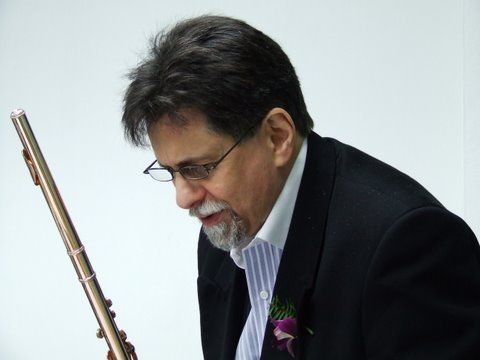 Chaconne, BWV 1004, by J. S. Bach
Chaconne, BWV 1004, by J. S. Bach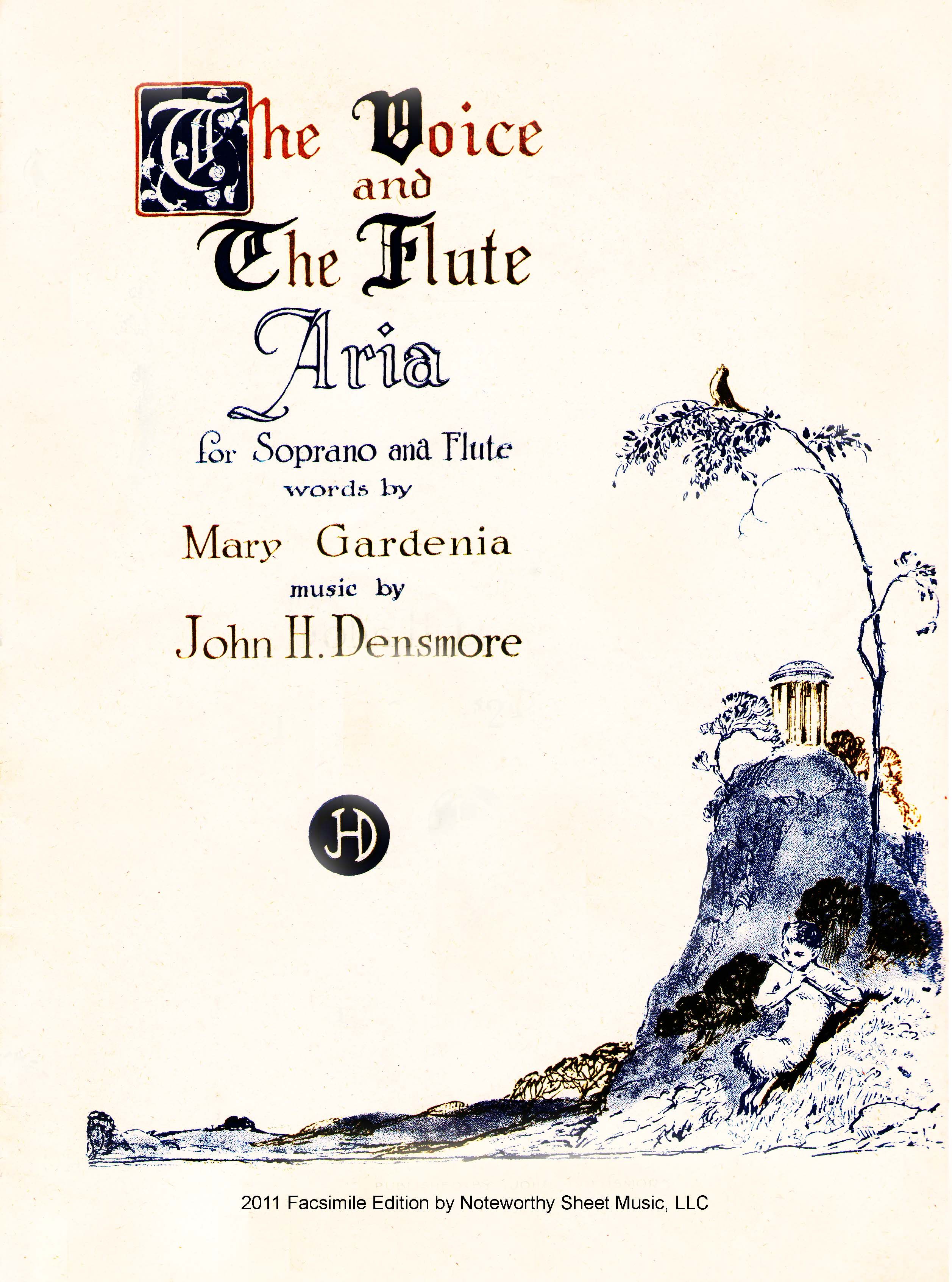 The Voice and The Flute, by John H. Densmore
The Voice and The Flute, by John H. Densmore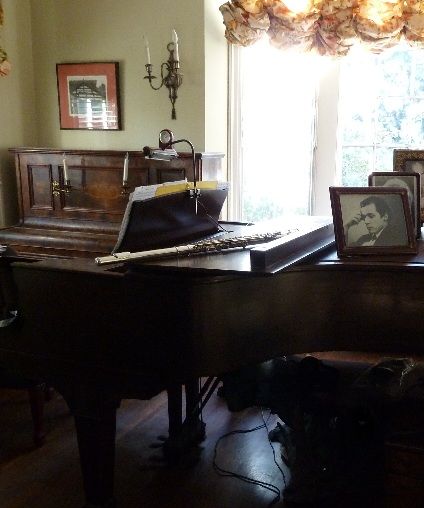 Romantische Stücke, Op.75, by Antonín Dvořák
Romantische Stücke, Op.75, by Antonín Dvořák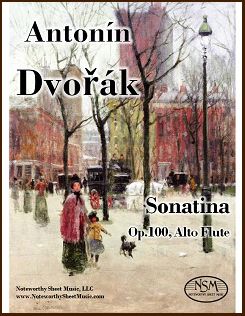 Sonatina, Op.100, by Antonín Dvořák
Sonatina, Op.100, by Antonín Dvořák 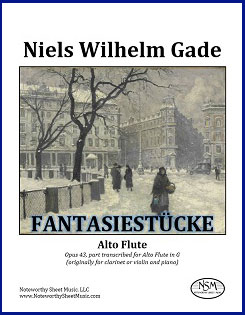 Fantasiestücke, Op.43, by Niels W. Gade
Fantasiestücke, Op.43, by Niels W. Gade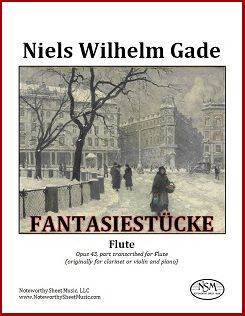 Fantasiestücke, Op.43, by Niels W. Gade
Fantasiestücke, Op.43, by Niels W. Gade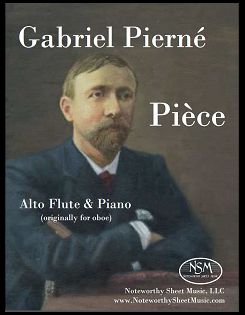
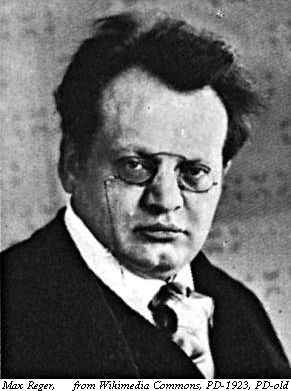 Suite in A Minor, Op.103a, by Max Reger
Suite in A Minor, Op.103a, by Max Reger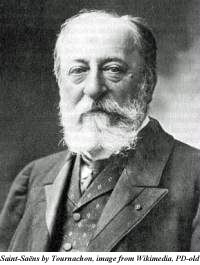 Sonata, Op.166, by Camille Saint-Saëns
Sonata, Op.166, by Camille Saint-Saëns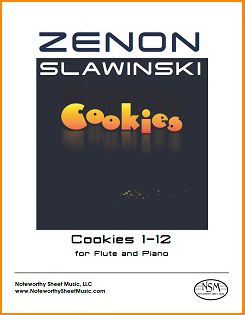 Cookies, by Zenon Slawinski
Cookies, by Zenon Slawinski 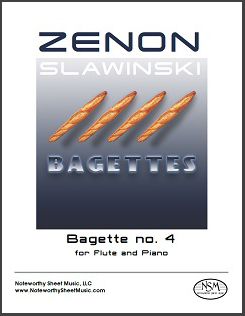 Bagette no. 4, by Zenon Slawinski
Bagette no. 4, by Zenon Slawinski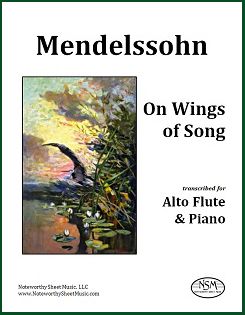 On Wings of Song, Op.34, No.2, by Felix Mendelssohn
On Wings of Song, Op.34, No.2, by Felix Mendelssohn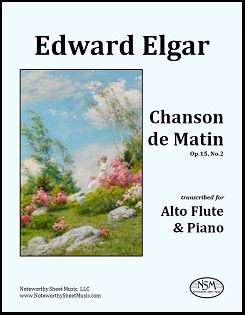 Chanson de Matin, Op.15, No.2, by Edward Elgar
Chanson de Matin, Op.15, No.2, by Edward Elgar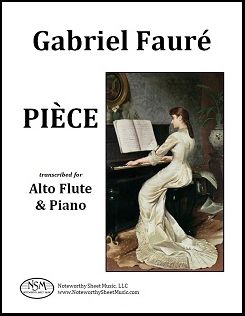 Pièce (Vocalise-Étude), by Gabriel Fauré
Pièce (Vocalise-Étude), by Gabriel Fauré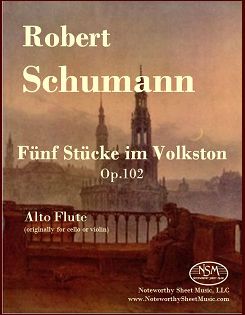 Fünf Stücke im Volkston, Op.102, by Robert Schumann
Fünf Stücke im Volkston, Op.102, by Robert Schumann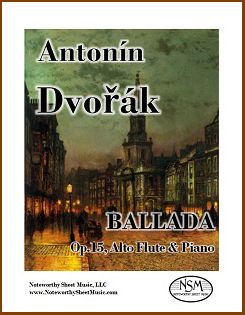 Ballada, Op. 15, by Antonín Dvořák
Ballada, Op. 15, by Antonín Dvořák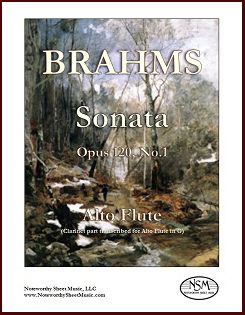 Sonata, Op.120 No.1, by Johannes Brahms
Sonata, Op.120 No.1, by Johannes Brahms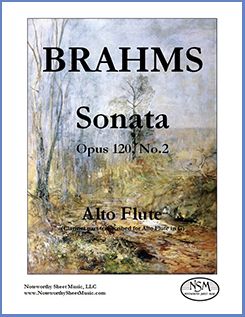 Sonata, Op.120 No.2, by Johannes Brahms
Sonata, Op.120 No.2, by Johannes Brahms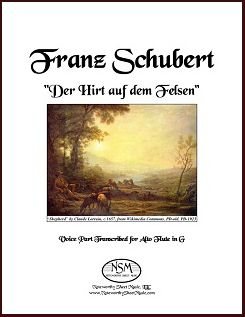 Der Hirt auf dem Felsen, Op.129, by F. Schubert
Der Hirt auf dem Felsen, Op.129, by F. Schubert 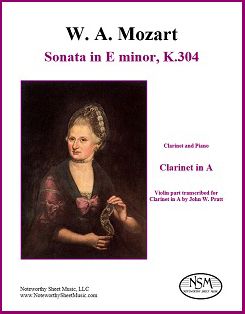 Sonata in E minor, K.304, by W. A. Mozart
Sonata in E minor, K.304, by W. A. Mozart